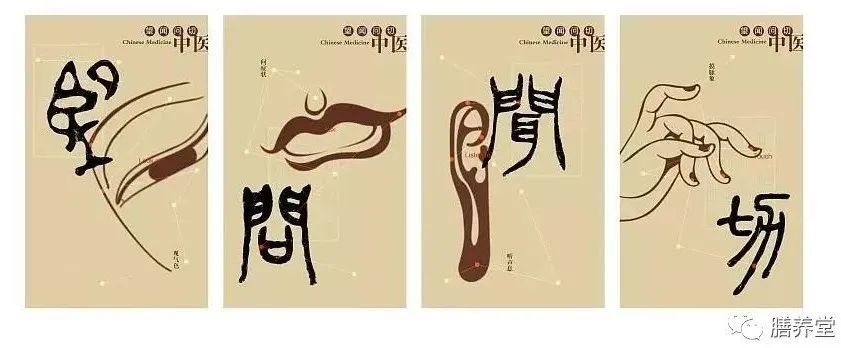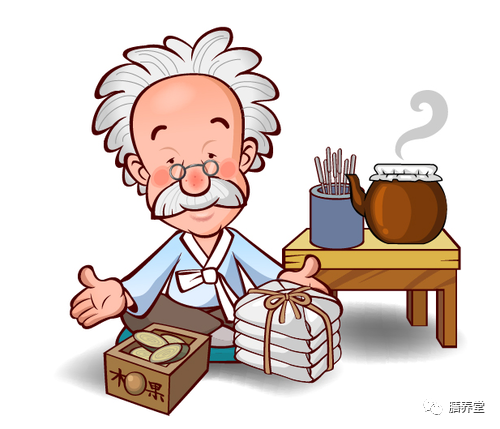
Diagnosis in Traditional Chinese Medicine (TCM) refers to the method of querying patients and their informants about the occurrence, development, current symptoms, and treatment history of diseases through dialogue. It is one of the four diagnostic methods. This includes the patient’s constitution, lifestyle habits, causes of onset, course of the disease and treatment, current symptoms, past medical history, and family history. Specifically, it can include inquiries about cold and heat, sweating, pain, sleep, dietary preferences, and urination and defecation.
The content can be traced back to the “Su Wen: Zheng Si Shi Lun” and other texts. The “Nan Jing” lists the four diagnostic methods: observation, listening, inquiry, and palpation. In the Ming Dynasty, Zhang Jingyue’s “Jingyue Quanshu: Shi Wen Pian” comprehensively summarized the content, order, and significance of inquiry. In the Qing Dynasty, Lin Zhihan’s “Si Zhen Jue Wei” dedicated a chapter to inquiry.

1. Inquiry about Cold and HeatThe occurrence of cold and heat is mainly determined by the nature of the pathogenic factor and the balance of Yin and Yang in the body, reflecting the interaction between the body’s righteous and evil forces.
1. Chills and Fever: When a disease first arises, chills and fever often occur simultaneously, mostly indicating an exterior syndrome. There are three types:
⑴ Exterior Cold Syndrome: Severe chills with mild fever. Caused by external cold pathogens, often accompanied by no sweating, headache, and body aches, with a floating and tight pulse.
⑵ Exterior Heat Syndrome: Mild chills with severe fever. Caused by external heat pathogens, often accompanied by dry mouth and slight thirst, or sweating, with a floating and rapid pulse.
⑶ Taiyang Wind Syndrome: Mild fever, aversion to wind, and spontaneous sweating. Caused by external wind pathogens.
2. Cold without Heat: The patient feels cold but does not have a fever. This indicates a deficiency of Yang Qi, known as a deficiency cold syndrome.
3. Heat without Cold: The patient has a fever but does not feel cold or is afraid of heat, indicating an interior heat syndrome. If high fever is accompanied by thirst for cold drinks, sweating, and constipation, it is a real heat syndrome. If there is low-grade fever in the afternoon, accompanied by hot palms and soles, night sweats, and flushed cheeks, it indicates an interior deficiency heat syndrome.
4. Alternating Cold and Heat: Cold and heat appear alternately. If the alternation is regular, it indicates malaria. If it is irregular, accompanied by distension and pain in the flanks and bitter mouth, it indicates liver and gallbladder disease.
2. Inquiry about SweatingSweating is related to the balance of Yang Qi and the abundance or deficiency of body fluids.No Sweating: If there is no sweating with fever, chills, and headache, it indicates an exterior excess syndrome.Sweating: If there is sweating with fever and aversion to wind, it indicates an exterior deficiency syndrome.Spontaneous Sweating: Sweating with slight activity during the day, often accompanied by fatigue, shortness of breath, and aversion to cold, indicates a deficiency of Yang Qi, often due to internal injury.Night Sweats: Sweating during sleep, accompanied by fever, flushed cheeks, irritability, insomnia, and dry mouth, indicates internal heat due to Yin deficiency, often due to internal injury.
Profuse Sweating: Initial whole-body shivering followed by sweating indicates a turning point in the disease. If sweating leads to a reduction in fever and the body feels cool, it indicates improvement; if sweating does not reduce fever and the patient feels restless, it indicates deterioration. In severe cases, continuous profuse sweating indicates a critical condition.
Location of Sweating: Sweating in the chest area often indicates weak heart Qi or insufficient heart blood; sweating on the head often indicates damp-heat accumulation; sweating on the palms and soles often indicates spleen and stomach weakness or damp-heat obstruction; sweating on the upper body often indicates Yang Qi deficiency; sweating on the lower body often indicates Yin deficiency with internal heat or both Yin and Yang deficiency; sweating on one side may indicate a stroke with paralysis (the non-sweating side is the paralyzed limb).

3. Inquiry about PainInquire about the location, nature, and intensity of pain to observe the condition.Headache: Sudden headache that is persistent, accompanied by chills and fever, often indicates an exterior excess syndrome. Intermittent headaches that worsen with fatigue or are accompanied by dizziness often indicate an internal deficiency syndrome.Chest Pain: Chest pain due to lung heat is often unilateral, accompanied by fever and cough with yellow and thick phlegm; chest obstruction syndrome presents as a heavy pressure sensation or stabbing pain in the heart area, recurrent episodes, accompanied by palpitations and shortness of breath; pain from liver and gallbladder disease manifests as distension and discomfort in the flanks; stomach pain manifests as distension and pain in the epigastric area, often accompanied by belching and sour regurgitation.
4. Inquiry about SleepThe quality of sleep is closely related to the circulation of defensive Qi and the balance of Yin and Yang in the body.
Insomnia: Difficulty falling asleep or waking easily during the night, difficulty returning to sleep, or sleeplessness throughout the night. Often indicates insufficient Yin blood, leading to the heart being un-nourished. Commonly accompanied by palpitations, vivid dreams, tinnitus, and tidal fever. If insomnia is due to phlegm-heat or food stagnation, it is often accompanied by facial flushing, shortness of breath, thirst, and discomfort in the stomach.Excessive Sleepiness: Strong drowsiness, often falling asleep involuntarily. In older individuals with physical weakness, it often indicates heart and kidney Yang deficiency; in overweight individuals, it is often accompanied by abdominal distension and phlegm, due to spleen deficiency and excessive dampness, preventing the clear Yang from rising.
5. Inquiry about Dietary PreferencesThis includes understanding the amount of water intake, preference for hot or cold foods, appetite and food quantity, and any abnormal taste sensations.Excessive Thirst: Excessive thirst often indicates damage to body fluids, commonly seen in heat syndromes, dryness syndromes, or excessive sweating, vomiting, or diarrhea. If thirst is accompanied by a preference for cold drinks, it indicates interior heat damaging fluids. Frequent urination and weight loss may indicate diabetes.No Thirst or Little Thirst: No thirst or lack of desire to drink often indicates a cold syndrome. If there is thirst but vomiting after drinking, it often indicates water-dampness retention in the stomach. If there is thirst but little drinking, and a preference for hot drinks, it often indicates damp syndrome or deficiency cold syndrome, while a preference for cold drinks indicates damp-heat syndrome.Lack of Appetite and Food Aversion: Lack of desire to eat or food tasting bland indicates low appetite, often due to food stagnation or external heat. In chronic illness, lack of appetite often indicates spleen and stomach weakness. If there is aversion to food, it is often due to food stagnation or liver-spleen damp-heat.Excessive Eating and Selective Eating: Excessive eating and feeling hungry often indicate excessive stomach fire, as heat in the stomach consumes food. If a person who has been ill suddenly eats excessively, it often indicates impending failure of spleen and stomach Qi. Selective eating of raw rice, dirt, or other foreign substances often indicates parasitic accumulation.Taste Sensations: Bitter taste indicates liver and gallbladder heat; sour taste indicates gastrointestinal stagnation; foul breath indicates excessive stomach fire; bland taste indicates dampness or deficiency; sweet taste indicates spleen damp-heat; salty taste indicates kidney deficiency.
6. Inquiry about Urination and DefecationUnderstand the characteristics, color, odor, timing, quantity, and frequency of urination and defecation, as well as the sensations during these processes.Abnormal Bowel Movements: Difficulty in defecation, not having a bowel movement for several days, is called constipation. Heat excess damaging fluids leads to heat constipation; cold accumulation leads to cold constipation; Qi stagnation leads to Qi constipation; Qi deficiency leads to deficiency constipation. Unformed or watery stools with increased frequency indicate diarrhea. Loose stools that are unformed often indicate spleen failure to transport. Abdominal pain with diarrhea at dawn indicates “five dawn diarrhea,” often due to kidney Yang deficiency. Abdominal pain with diarrhea that improves after defecation indicates food stagnation diarrhea.Abnormal Stool Quality: Burning sensation or feeling of heaviness in the anus during defecation indicates spleen Qi sinking. Incomplete sensation during defecation indicates liver Qi stagnation. Diarrhea with undigested food indicates food stagnation; if diarrhea improves after defecation, it often indicates food injury. If stools are yellow and sticky, it often indicates damp-heat accumulation in the large intestine. Abdominal pain with frequent urges to defecate often indicates damp-heat obstruction or intestinal Qi stagnation, which are symptoms of dysentery. Incontinence often indicates kidney Yang deficiency.Abnormal Urine Volume: Increased urine volume indicates deficiency cold. Decreased urine volume is due to heat excess, excessive sweating damaging fluids, or vomiting and diarrhea damaging fluids.Abnormal Urination Frequency: Increased urination frequency with short, red, urgent urination often indicates damp-heat. In chronic illness, clear and frequent urination at night indicates kidney Yang deficiency. Difficulty urinating, with dribbling, often indicates damp-heat or blood stasis obstructing the flow, indicating an excess syndrome; if due to kidney Yang deficiency, it indicates a deficiency syndrome.Abnormal Urination Sensation: Painful urination, urgency, or burning sensation often indicates damp-heat descending to the bladder, commonly seen in gonorrhea. Incontinence during sleep indicates kidney Qi instability. Confusion and incontinence indicate a critical condition.


